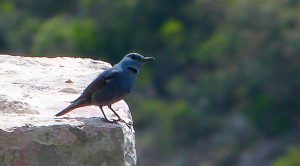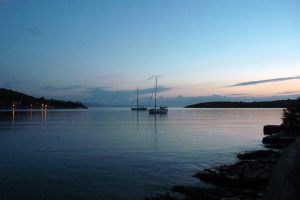“Meet the sun and the wind with more of your skin and less of your raiment, for the breath of life is in the sunlight and the hand of life is in the wind.“ (Khalil Gibran) Find out more about the most common winds in Dalmatia so that you could learn to love them.
Bora or the north wind is a strong wind that mostly blows during the colder months in the northern part of the east coast of the Adriatic Sea. It usually lasts for about three days and blows in gusts. It significantly affects the lives of people, organisms and vegetation. It comes from the land and blows toward the sea. It is created when cold air from the inland blows down steep mountain slopes and achieves speed of up to 250 km/h. Then strong bora gusts happen, which can be dangerous for traffic. With its impacts, the bora moves and raises seawater, creating restless sea and dispersing it into tiny droplets, which create a fine mist above sea level and a thin layer of salt that covers the soil and destroys vegetation leaving bare karst. The bora is a cold and dry wind, which lowers temperature and moisture, prevents cloud formation and rain. From the therapeutic, physiological and balneological points of view, the Bora is considered a positive factor because it brings the fresh mountain air, mixes it with warm sea air, lowers the temperature and revives the organism, while the dryness enhances transpiration. Wind gusts give favourable physiological stimuli because of the composition of finely dispersed sea salt and iodine, and ionization to some extent. The bora influences social life, therefore Dalmatian houses have low and heavy roofs, settlements are built in sheltered areas, resistant crops are grown and sailors have a keen sense of understanding weather changes. Its influence can be noticed in people’s characters and their lively temperament as well as endurance in struggling with this unfavourable natural element. According to legend, Bora was a beautiful young girl from a noble family who, because of her pride and arrogance, rejected every suitor. She boasted and bragged about her beauty and once said that she was more beautiful than the immortal fairies. For her arrogance, God struck her with thunder and threw her in Hell. Whenever a woman commits the sin of pride, Bora bitterly sighs remembering her once happy life. From her sighs, a strong and cold wind is created. Although the bora can be dangerous for traffic, it brings dry and clear weather in which the beauty of the Dalmatian landscape is most visible.
Jugo is a warm and humid wind that is usually followed by cloudy and rainy weather, or steamy weather. It is accompanied by high waves and not so favourable bio meteorological conditions. It is interesting that in the Republic of Ragusa, crimes committed when the Jugo blew were treated with more leniency because of the bad influence of the wind on people’s disposition.
Maestral is a refreshing northwest wind, which, during warm days, blows from the sea toward the land. It occurs mostly in the summertime and blows only at the coast about 20 feet from the sea. It blows from 10 AM to 6 PM and is strongest around 2 PM. It is accompanied by nice weather and the lowering of hot summer temperatures.
The bora in Lovište is not very strong, which can be seen in the green landscape that surrounds us. Jugo is the typical south Dalmatian wind, but the Lovište bay offers shelter from wind gusts. The wind that is characteristic of Lovište is Maestral, which comes as a refreshment during scalding summer days. Just like Camp Lupis!
Soak up the beauty of nature that surrounds us and “forget not that the earth delights to feel your bare feet and the winds long to play with your hair“. (Khalil Gibran)


